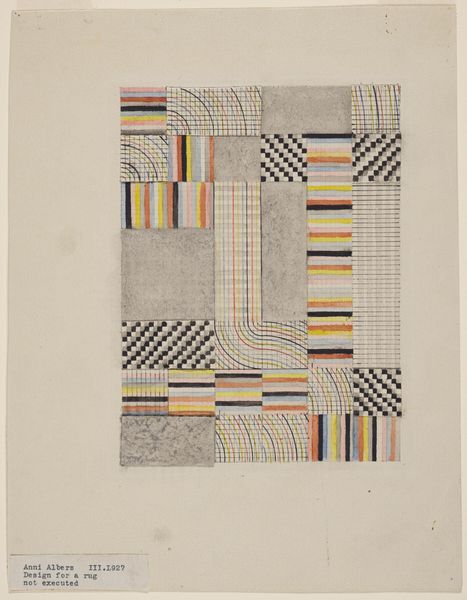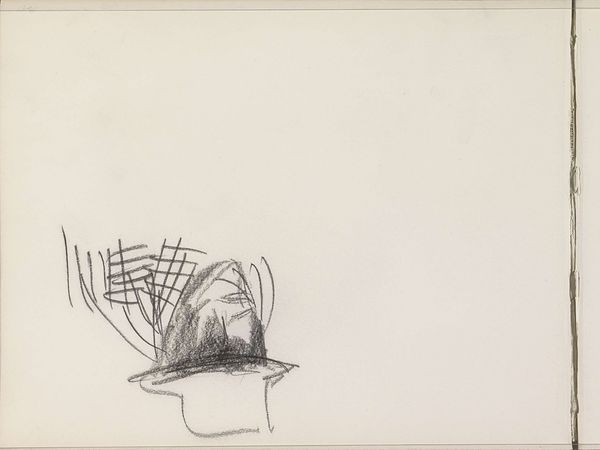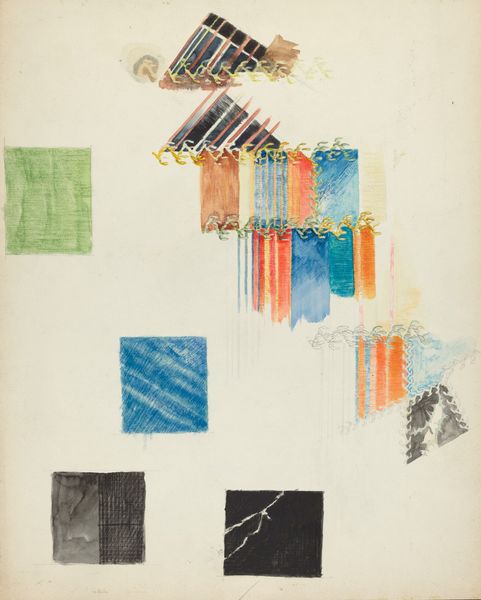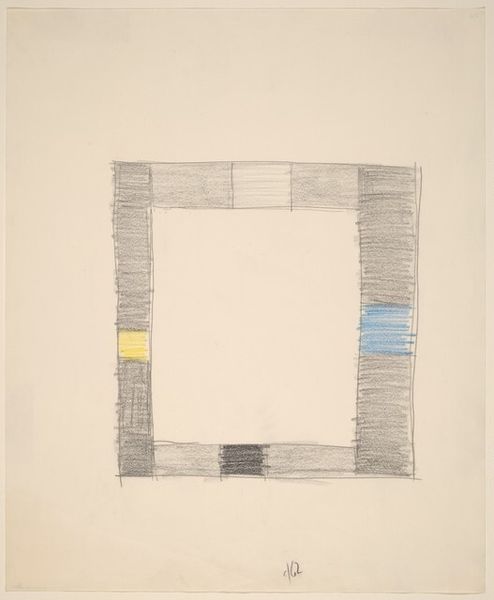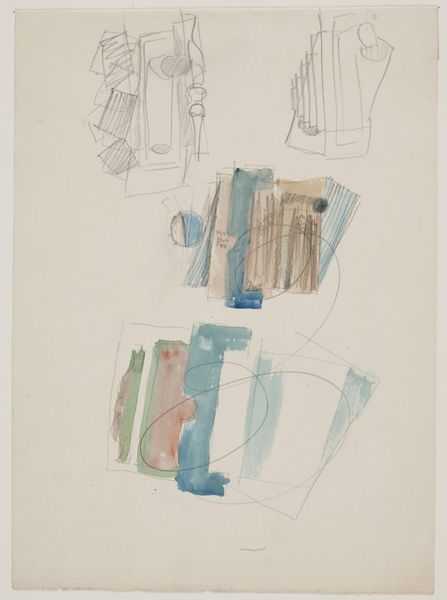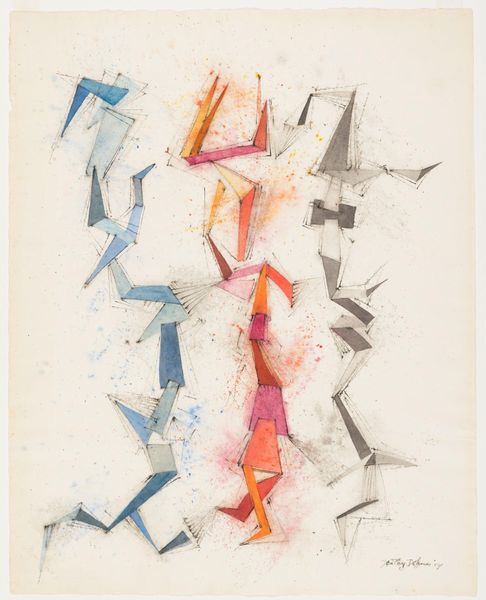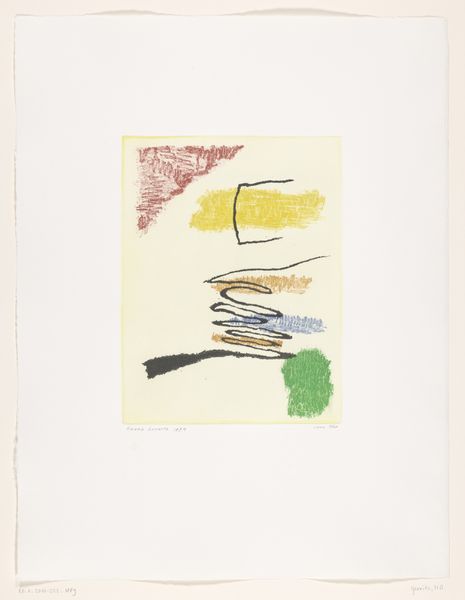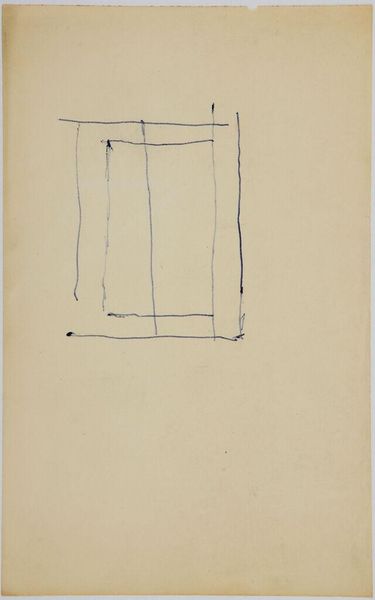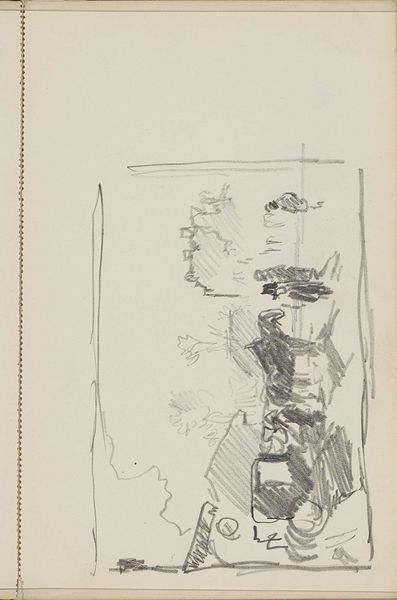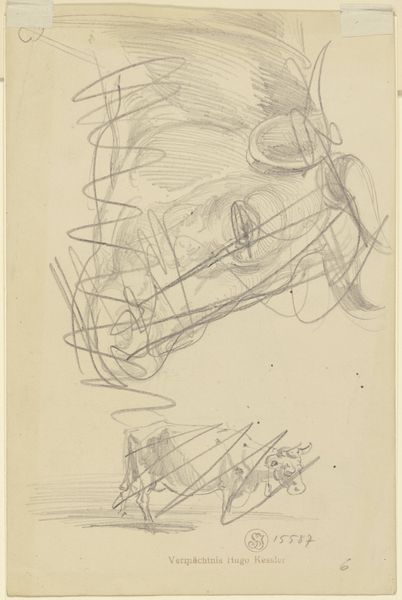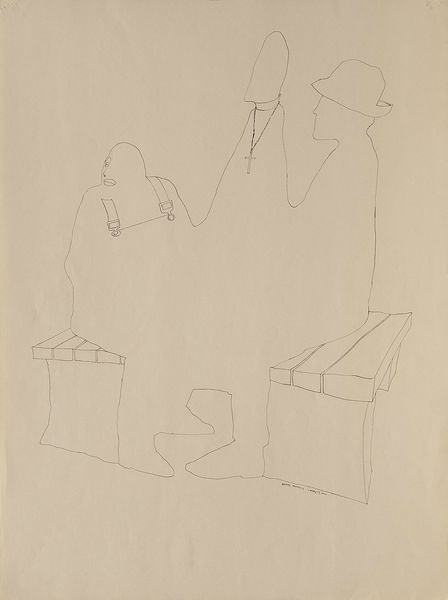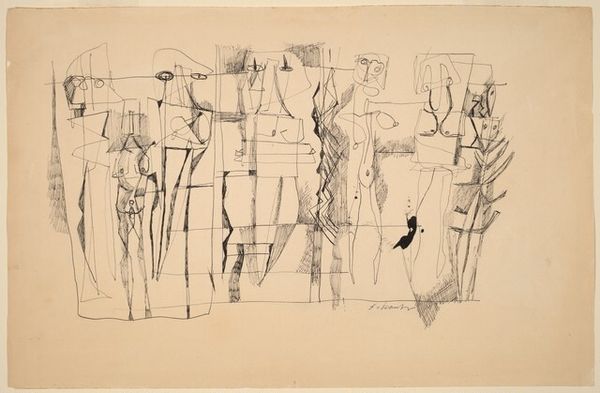
drawing, pencil
portrait
drawing
aged paper
contemporary
light pencil work
quirky sketch
figuration
personal sketchbook
idea generation sketch
ink drawing experimentation
pencil
sketchbook drawing
watercolour illustration
storyboard and sketchbook work
sketchbook art
Dimensions: sheet: 65.41 × 50.17 cm (25 3/4 × 19 3/4 in.)
Copyright: National Gallery of Art: CC0 1.0
Curator: We're looking at Saul Steinberg's "Untitled (Man and Woman in a Spatial Illusion)," created in 1968. It’s rendered with pencil on what appears to be aged paper. Editor: My first impression? It’s playfully disconcerting. The horizontal bars cutting across the figures create a sense of fragmentation. I’m intrigued by how this impacts our reading of form. Curator: Exactly! The horizontal lines physically interrupt the figures, speaking to a fractured reality. These interruptions prompt me to consider how societal structures, perhaps those dictated by gender and class, impose constraints and illusions onto individual identities, especially within the context of 1960s societal norms. Editor: Interesting. Visually, the artist uses those bars to flatten the image. It reduces depth and emphasizes the picture plane. Note the delicate light pencil work. There's a real focus on line and surface, defying traditional representational depth. The woman’s colorful hat is striking; it contrasts the monochromatic shading on the suit of the man to her left. Curator: Her bright hat, juxtaposed with the man's conventional attire, offers a social commentary too, doesn't it? Perhaps hinting at gendered expectations. While his side is shaded monochromatically, which could mirror societal pressures on masculinity, hers is brighter—seemingly mirroring feminine expectations, particularly related to physical appearance and visibility. Editor: Yes, the choice of watercolor illustration gives it a lightness, but I can’t escape the way those horizontal lines deny the viewer complete visual access. This adds a layer of abstraction, almost like a distorted photograph. Curator: Distorted indeed. I consider the post-war era context, one riddled with anxieties and shifting social mores, to find meaning. Does the image comment on those? I read Steinberg's work often as social commentary, reflecting our precarious attempts at constructing stable identities amidst societal pressures. The 'spatial illusion' isn’t just about lines but also about ideological barriers. Editor: I find it so curious the way Steinberg merges figure and ground. Our eye completes the figures but the bars serve as potent reminders of artifice. They constantly break the illusion even as we are invited to perceive it. I wonder, what would a viewer from the late 60's have felt when encountering it? Curator: They might see their own realities mirrored. The struggle to assert individuality against prevailing norms of that era. A commentary about how 'seeing' is inherently political, structured by the lens of society. Editor: I’ll stick to simply seeing what’s actually here… fragmented but ultimately connected forms, beautifully composed. Curator: Fair enough. Art has infinite reflections after all.
Comments
No comments
Be the first to comment and join the conversation on the ultimate creative platform.
